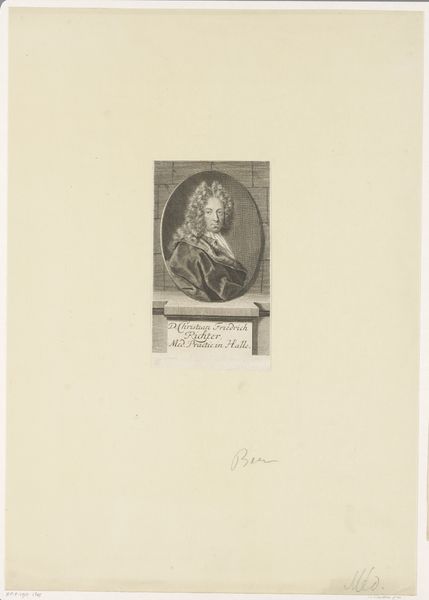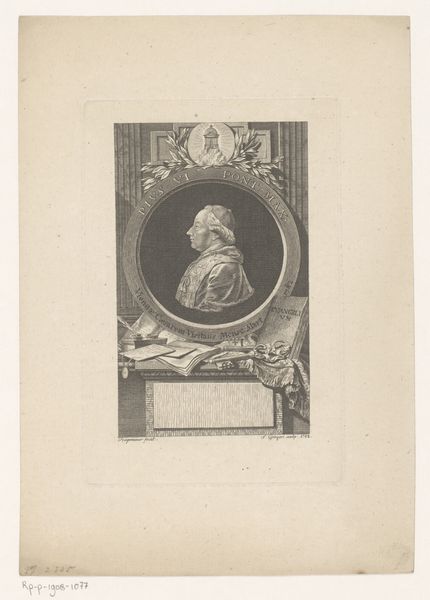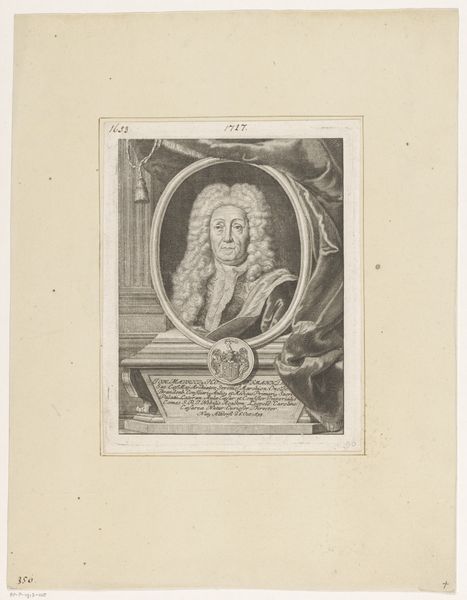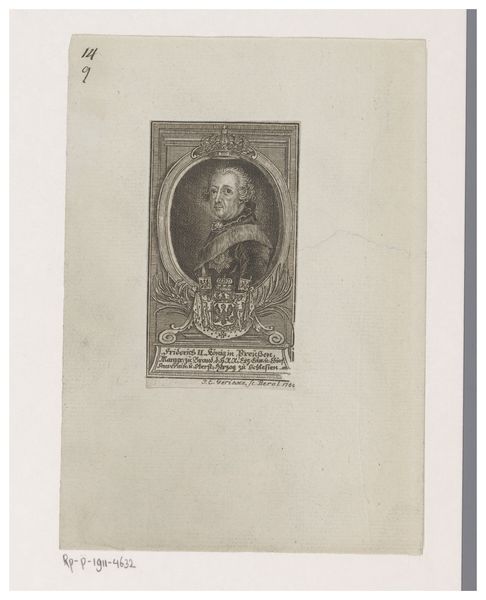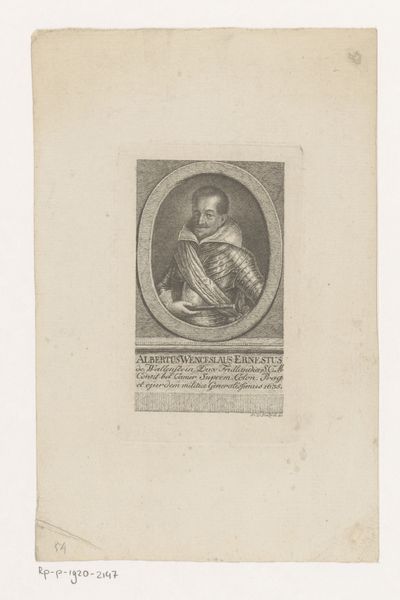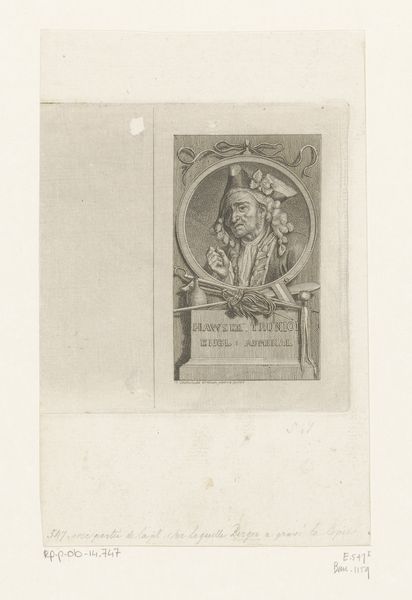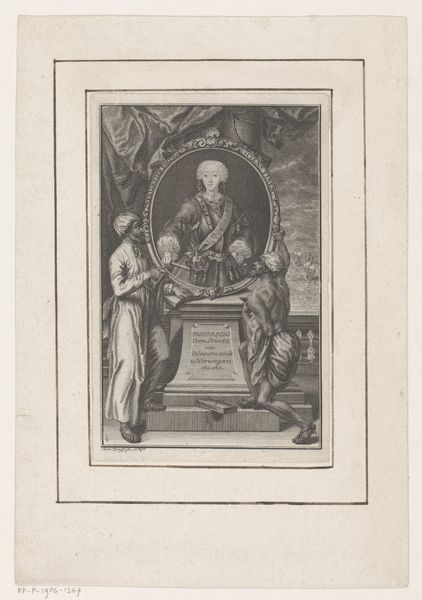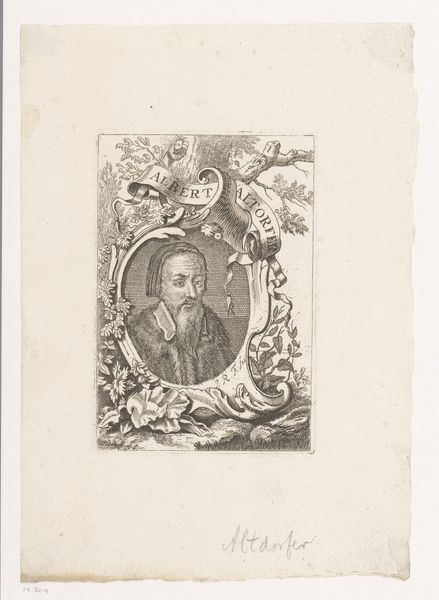
Dimensions: height 186 mm, width 145 mm
Copyright: Rijks Museum: Open Domain
Curator: What strikes me immediately about this engraving is the controlled yet lively quality of the lines. The details, particularly in the ornamental frame, create a visual feast. Editor: This is "Portret van Johann Hieronymus Kniphoff" by Hermann Jakob Tyroff, made sometime between 1761 and 1798. It is an engraving on paper portraying the sitter in a window. The baroque sensibilities are very evident. Curator: The baroque ornamentation certainly enhances the status of the sitter. The cartouche below, coupled with the elaborate window frame, speaks to hierarchy and prestige. Note how the artist balances positive and negative space, directing the eye to Kniphoff’s face, framed by that magnificent wig. Editor: Absolutely, but what's equally fascinating is the public function of portraiture at this time. Images like these circulated widely, building and reinforcing social structures and individual reputations. The printed portrait became a crucial tool in spreading ideology. Who exactly Kniphoff was matters quite a bit here, too. Curator: Context is crucial. However, even without knowing the sitter's exact identity, we can interpret the print's formal qualities. The light, shadow, and textural variations—all meticulously rendered—offer insights into the artist's technique. Tyroff uses hatching and cross-hatching to build volume. Editor: The image functions almost as a political advertisement, not merely capturing a likeness, but constructing and broadcasting Kniphoff's social standing, the baroque setting alluding to status, patronage and education of this high-ranking individual. It shows the era's culture and values, more so than one man’s visage. Curator: A well-argued point, I think. My attention is focused by the artist's process and the effects achieved with specific techniques, such as using darker lines in the wig to set it off, for instance, even without knowing Kniphoff’s place in the grand scheme of history. It truly displays an aesthetic vision within a tight framework. Editor: Understanding both the visual elements and the societal context provides a more profound appreciation for these historical portrait prints. Curator: Agreed. A perfect fusion of aesthetics and meaning allows for a deeper dialogue with history through form.
Comments
No comments
Be the first to comment and join the conversation on the ultimate creative platform.

